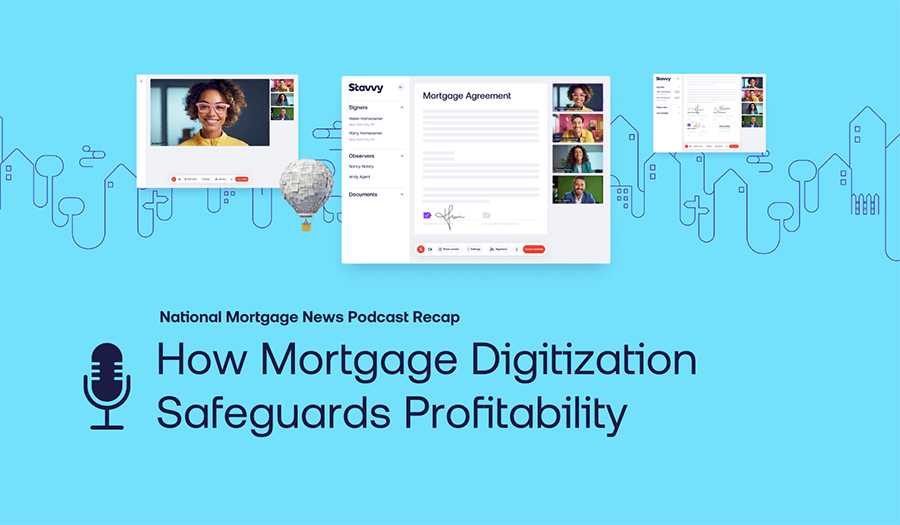Stavvy's goal is to modernize the process of originating, servicing, or modifying loans and streamline the experience for bankers and for consumers. We’re helping digitize the mortgage industry and move away from pen and paper.
For anyone who has purchased a home before, the phrase “pen and paper” may trigger a phantom cramp in your hand. With a transaction as large and complex as a home loan, there is a near-literal mountain of paperwork that needs to be signed, initialed, and notarized. One of the many benefits of conducting this type of transaction digitally is that this part of the process just involves a few clicks.
But what consumers might not know is that setting up those digital documents for signatures, notary seals, and initials can be time-consuming work. Every “field” where information needs to be entered -- whether that’s a name, address, or signature -- must be placed onto the document as a blank field by the bank or servicer. The team at Stavvy saw some of our customers going through this painstaking process for each and every document they were preparing and came up with a solution: Templates to standardize placement of these fields.
Learn more about Stavvy's eSign feature.
Automating the Annotation Process
Most lending firms have standard document layouts that they’ll use for most transactions of the same type. Though the details within each transaction may differ, or the number of signers might change, generally the placement of fields that need to be filled out will be in the same place. To save hundreds of clicks for each new transaction that a servicer or notary may be preparing for, Templates are now a standard feature on the Stavvy platform.
Now, placing those fields only needs to be done once, saved as a Template, and can then be applied to any new documents that use the same layout. After the Template is applied, signature fields show up in the right place, “initial here” boxes get automatically added, and it’s easy to insert the names and personal information of anyone signing so that it automatically populates throughout the document.
Saving Time
The promise of paperless signing and digital transactions is that it saves time and offers more convenience. No need to make your way to a physical office space (potentially having to take time off of work), no need to sign hundreds of pieces of paper. These benefits are consumer-facing, but there’s also the time that the notary or title office saves having to file physical documents, organize the in-person visit, and other associated superfluous activities involved.
However, manually paging through a document to add each and every required form field was a new time-suck that these offices didn’t have to deal with before. Now, with Stavvy, Templates offer a way to claim that lost time back and let loan servicing professionals dedicate more of their focus to their clients.
Preventing Errors
Especially in the home loan industry, a staggering number of hours are wasted on rejected documents due to incorrect or missed signatures or other information. With so many individual pieces of paper being created, read, and signed by multiple parties, it’s hard to avoid an occasional hiccup. But one small hiccup can mean having to set up another meeting, another signing, or another overnight delivery.
With a digital document in Stavvy, each user has a clear workflow and is better set up to dot every I and cross every T -- meaning document accuracy is drastically improved.
Designing What’s Next
In the grand scheme of things, Templates is a relatively small feature for Stavvy. But it represents our commitment to modernizing digital transactions and taking away the headaches for everyone involved in the process.
In our product roadmap, we’re planning more advanced features for Templates like using machine learning to identify where fields need to be placed without the need for someone to manually assign those within a document. Beyond that, we’re working with our partners to identify other small pain points that a new feature or feature update might solve for.
Learn more about how the  is taking real estate beyond documents.
is taking real estate beyond documents.



![[Webinar Recap] Advancing Your Digital Default Servicing Strategy](https://blog.stavvy.com/hubfs/advancing-your-digital-default-servicing-strategy-blog-recap.png)